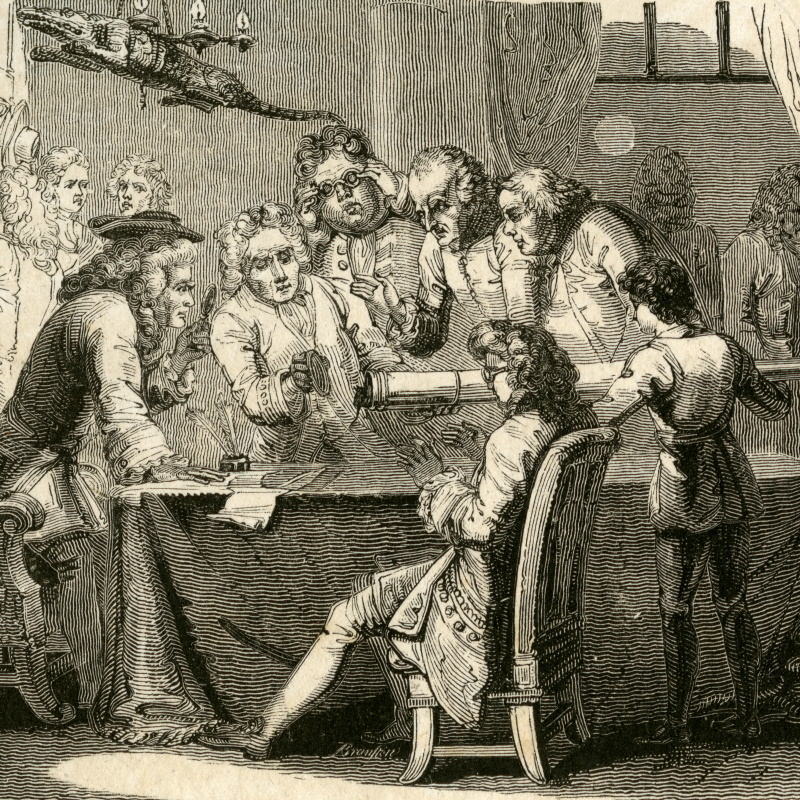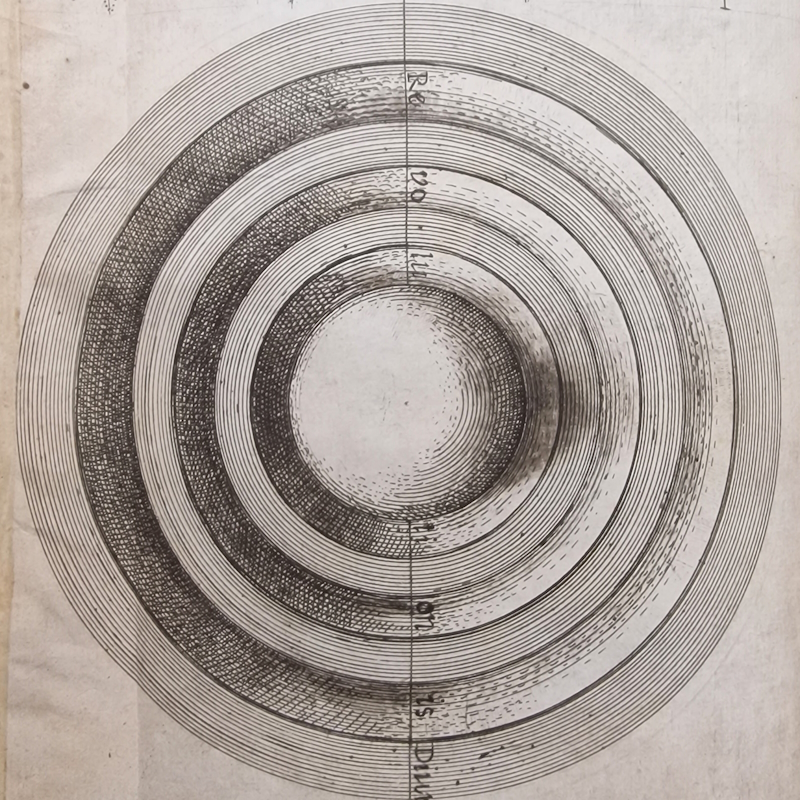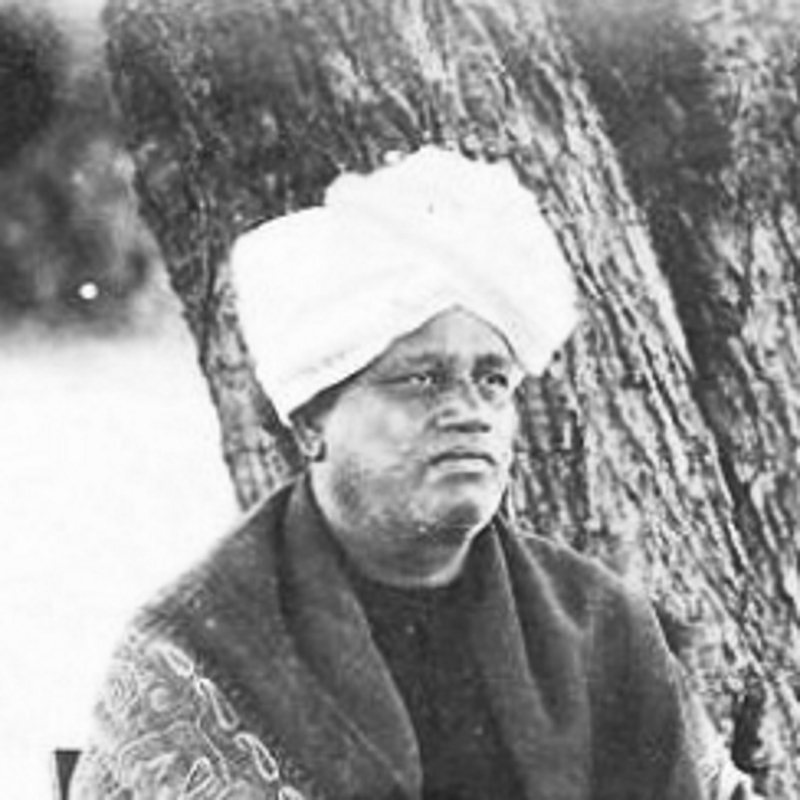On the day of a total solar eclipse visible across North America, Jon Bushell looks at accounts of eclipses in the collections of the Royal Society.
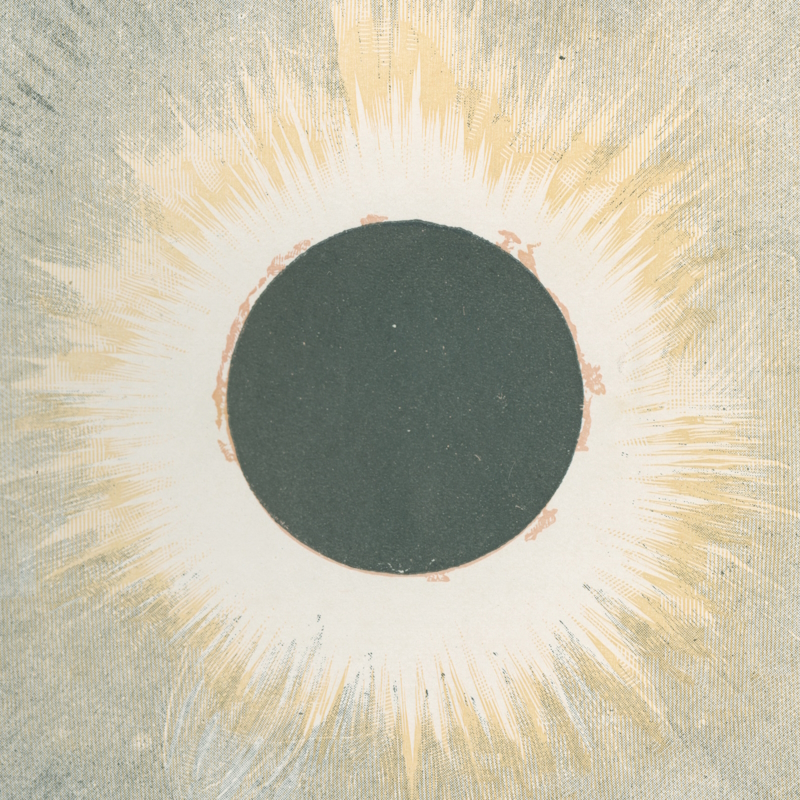
Large parts of Mexico, the United States of America and Canada are due to experience a total solar eclipse in just a few hours. The Moon’s shadow will pass over Mexico after 11am local time (7pm BST), before crossing northeast across the continent to the eastern shores of Canada. If you’re in Ireland or the west of Scotland you might catch a partial eclipse before sunset, but for most of us in the UK we’ll have to make do with watching NASA's livestream.
Accounts of eclipses can be found throughout human history, often providing useful dating evidence for historians. The second century scholar Ptolemy included data on solar and lunar eclipses in his astronomical tables, which were still being referenced many centuries later. In the thirteenth century, the monk Johannes de Sacrobosco wrote De sphaera mundi, expanding on Ptolemy’s work including the nature of eclipses.
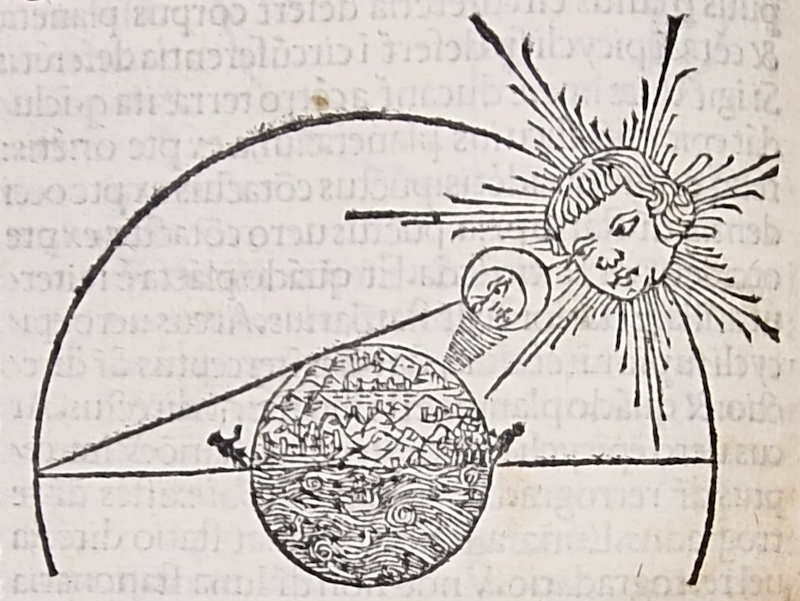 Diagram of a solar eclipse in a 1490 edition of Sacrobosco’s Sphaera mundi (R61041)
Diagram of a solar eclipse in a 1490 edition of Sacrobosco’s Sphaera mundi (R61041)
Many Fellows of the Royal Society have had a keen interest in astronomical matters, and the archives contain a trove of observations right back to its earliest days. A partial solar eclipse took place on 22 June 1666, observed by Robert Hooke, Francis Willughby and Walter Pope from Gresham College, using a telescope to cast the shadow onto a piece of paper in order to record the maximum point. Edward Montagu saw the same eclipse while in Madrid, also providing an account to the Society.
Methods for predicting eclipses were becoming more precise. Edmond Halley famously calculated the start of the 1715 eclipse in London to within four minutes, and such accuracy allowed astronomers to plan their observations more thoroughly. Halley was among the first to publish a map before an eclipse, showing its path across the country. Many similar maps were printed for subsequent events throughout the century.
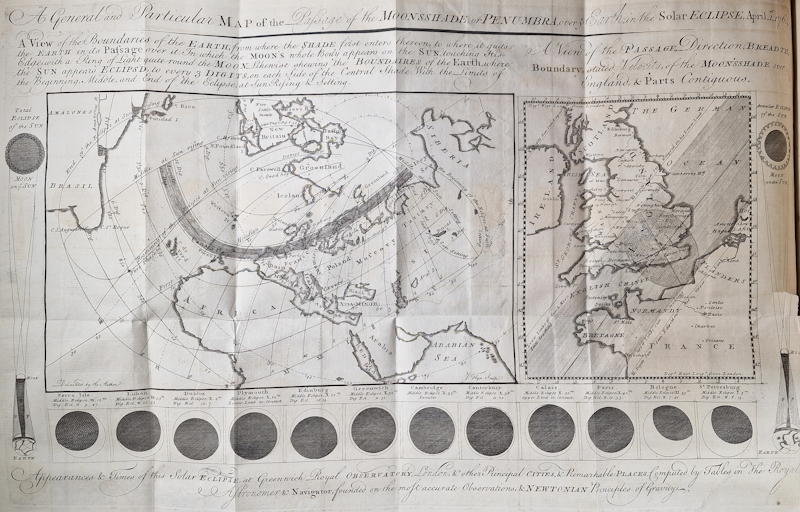 A map of the calculated passage of the penumbra over the earth during the eclipse on 1 April 1764, in Robert Heath’s A general and particular account of the annular eclipse of the Sun (43414)
A map of the calculated passage of the penumbra over the earth during the eclipse on 1 April 1764, in Robert Heath’s A general and particular account of the annular eclipse of the Sun (43414)
Predicting when and where eclipses could be observed was one thing, but the logistics of getting to those locations was another challenge entirely. Many British scientific expeditions of this period relied heavily on the resources of the Royal Navy. In 1766, for instance, a certain James Cook was surveying the coasts of Newfoundland and Labrador in northeast Canada on board HMS Grenville. Knowing that a total solar eclipse would be visible on 5 August, he had the appropriate instruments to document the event and send his account to the Royal Society. This provided valuable experience for Cook which would serve him well during his subsequent observations of the transit of Venus in Tahiti in 1769.
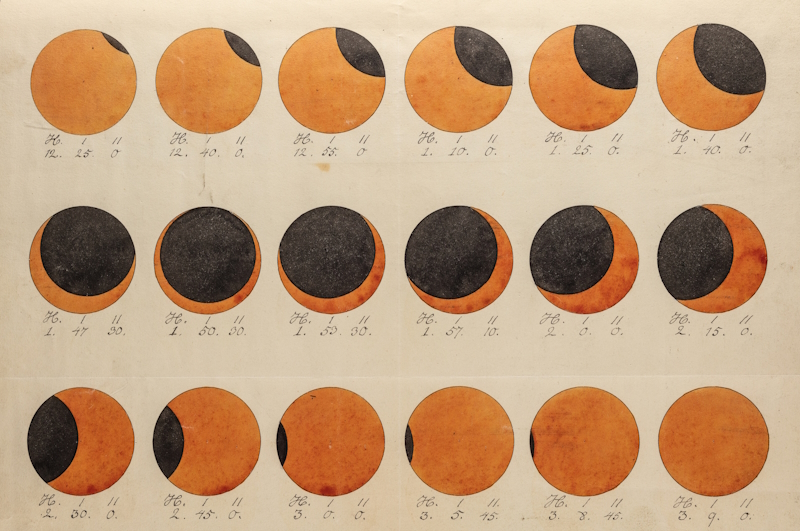 Drawing of an eclipse of the Sun, 7 September 1820, by Franz Bauer (from PT/15/1)
Drawing of an eclipse of the Sun, 7 September 1820, by Franz Bauer (from PT/15/1)
In the nineteenth century the Royal Society took an active role in planning further astronomical expeditions. In January 1870, Council appointed a committee to consider potential experiments to be carried out in Spain during the solar eclipse in December of that year. A few years later, Chulalongkorn, King Rama V of Siam (Thailand) wrote to the Society proposing they send observers to view the eclipse there in April 1875. The subsequent expedition published its findings in the Philosophical Transactions, including several photographs of the corona.
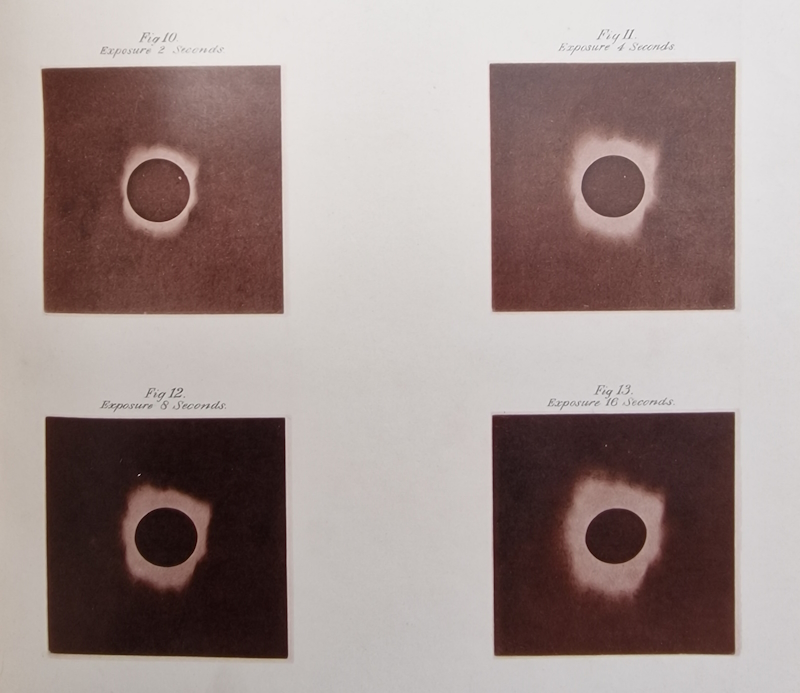 Photographs of the corona with differing exposure length, taken during the April 1875 Siam eclipse
Photographs of the corona with differing exposure length, taken during the April 1875 Siam eclipse
Photography was becoming a key tool for documenting and comparing eclipses in this period. Commander Edward David Ashe led an expedition from the Quebec observatory to Iowa to observe the 1869 eclipse there, taking several photographs which were subsequently reproduced in copies of the published report. Copies of photographic plates and negatives were also frequently shared between institutions internationally. The Royal Society at one point received a box of lantern slides from the Lick Observatory in California, containing copies of their photographs of the April 1893 eclipse. These were passed on to Hugh Frank Newall for use in his observatory in Cambridge, as Council feared that ‘adequate use could not be made of the Photographs’ in the Society’s library.
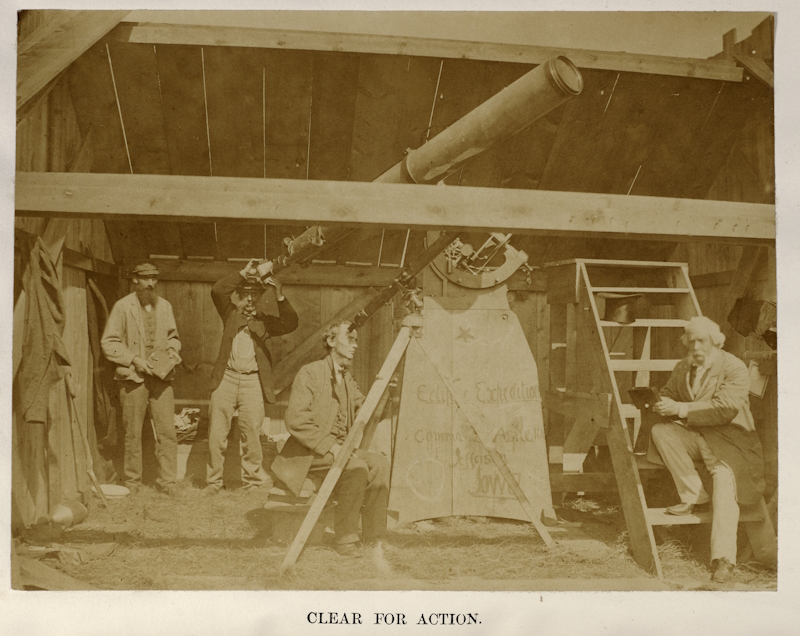 Commander Ashe and three of his assistants preparing to view the 1869 eclipse (RS.9185)
Commander Ashe and three of his assistants preparing to view the 1869 eclipse (RS.9185)
Ongoing interest in eclipse observations led the Royal Society to combine forces with the Royal Astronomical Society to form the Joint Permanent Eclipse Committee. It regularly considered applications for new eclipse expeditions and provided funding, logistical support and instruments. Among recipients of its support was Frank Watson Dyson, who travelled to Sumatra to view an eclipse in 1901. Dyson would later work with Arthur Stanley Eddington to organise 1919 trips to Brazil and Principe, again with the support of the committee. Their purpose was to use observations of the 29 May eclipse to verify Einstein’s theory of general relativity.
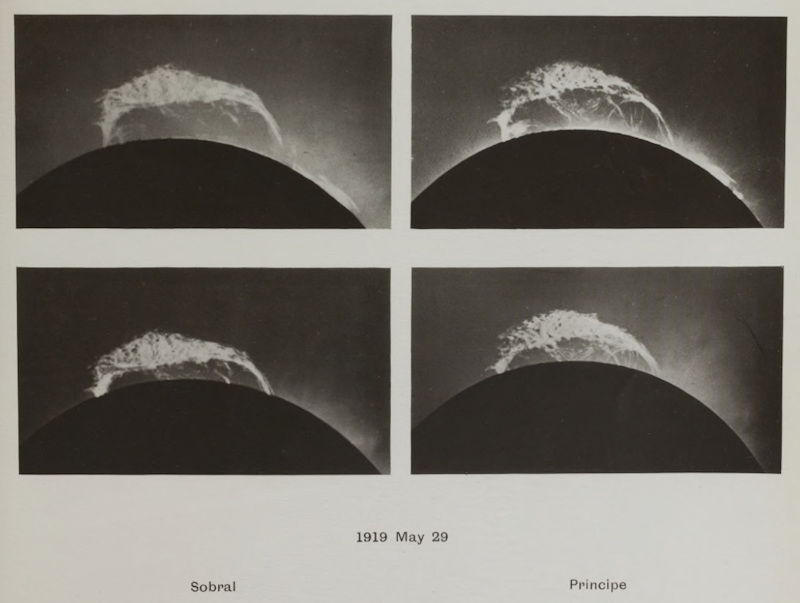 Photographs of a solar prominence observed during the 1919 eclipse, reproduced in the Philosophical Transactions
Photographs of a solar prominence observed during the 1919 eclipse, reproduced in the Philosophical Transactions
The committee continued to operate for much of the twentieth century, but by the late 1960s it was becoming clear that its importance was waning. Improvements in instrument design for spectroscopy meant that solar physics no longer relied exclusively on data collected during eclipses. Likewise, the UK Science Research Council had taken on much of the financial burden for funding expeditions. The Joint Permanent Eclipse Committee was dissolved in 1970.
If you’re wondering when the UK might be treated to its next total solar eclipse, unfortunately this won’t occur until 2090. There is a solar eclipse due in August 2026, although this won’t quite be total in the UK. The path of totality will pass over northern Spain, so you’ve got plenty of time to start planning your own eclipse expedition. You’ll have to fund it yourself, though.
Top image: an eclipse from Agnes Giberne’s Sun, moon, and stars: astronomy for beginners, 1910 edition (14359)


